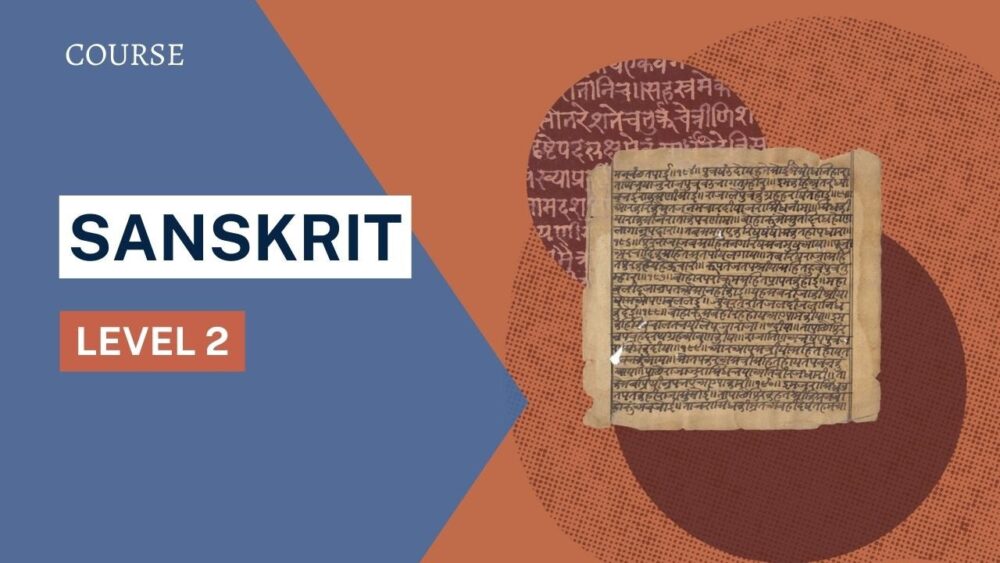

We will begin by learning masculine and neuter nouns, ending in -a, together with their eight cases.
File Size: 5.33 GB.

In this course, students will build upon what we learned in the Introduction to Sanskrit course. We will begin by learning masculine and neuter nouns, ending in -a, together with their eight cases. We will go through specific examples of each case together, reading from texts such as the Bhagavad Gītā and Haṭha Pradīpikā. We will then learn ātmanepada present tense verbs and feminine nouns ending in ā, finishing with a review of sandhi, word combination. Students will study from Zoë’s book, “Yogāvatāraṇam: The Translation of Yoga,” which she wrote to join Eastern and Western methods and theory and practice together.
In each session, we will cover a few new concepts. Students will be given weekly homework assignments to do for the next class. Answers will be reviewed in the following class and posted on the Facebook forum. It is suggested that students continue to develop a Sanskrit study practice. Like with yoga, Sanskrit is best learned through consistent practice, rather than through quantity. It is recommended that students do 15-20 minutes a day rather than an hour a couple of times a week.
In this module, we will start Chapter 3 of “Yogāvatāraṇam: The Translation of Yoga,” beginning with the eight declensions for masculine and neuter nouns ending in -a and learning some common nouns. We will then look at the nominative, or subject case, in detail, with examples.
We will begin by reviewing the declensions of masculine and neuter nouns and the examples of the nominative. We will then look at the accusative or object case and the instrumental case, which is used to show agency and explain how things are done, going through examples of each together.
We will start with a review of the verses focused on the accusative and instrumental cases. We will then look at the dative case, used for the indirect object or purpose, and the ablative case, used to express action from something or to express an origin or reason. We will also look at examples of both cases.
In this module, we will start by reviewing the verses on the genitive and locative cases. We will then learn the final case, the vocative, used to address a person, god, or personified object. We will then take some time to review the whole chapter.
In this module, we will start by reviewing the verses on the genitive and locative cases. We will then learn the final case, the vocative, used to address a person, god, or personified object. We will then take some time to review the whole chapter.
We will start by going over the review exercises from Chapter 3. We will then begin Chapter 4 of Yogāvatāraṇam: The Translation of Yoga.” We will learn present tense verbs in the ātmanepada voice, originally considered self-reflexive verbs. We will go through the conjugations in detail and look at an example.
After reviewing the exercises on the ātmanepada voice, we will learn the declensions for feminine nouns ending in -ā and -ī. We will learn some common nouns and then go through an example together.
In this session, we will review the declensions of feminine nouns ending in -ā and ī and the verse examples. We will then do a review of the sandhi (word combination) rules we have learned in the previous chapters.
In our final session, we will go over the review exercises, including one on learning how to add sandhi rules yourself as well as doing translation. We will also take some time to review Chapters 3 and 4 and answer any remaining questions you may have.
There are no reviews yet.
You must be <a href="https://wislibrary.org/my-account/">logged in</a> to post a review.